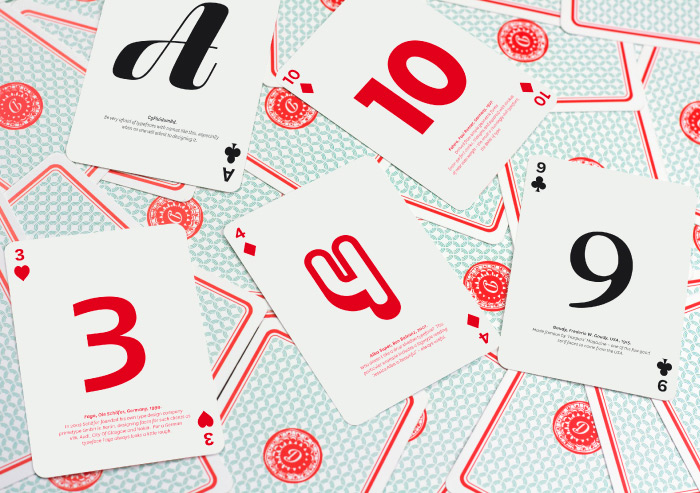malectpin is from Palestinian Territory, has been a member for 12 years and last logged in 12 years ago.
|
Trade Policy:
Suzann Pettersen has long relished the grueling challenge at the U.S. Women's Open and once again she is using the psychological ploy of expecting "the worst" in this week's edition at Southampton in New York. Robert Karlsson moved into a tie for fourth at the Wells Fargo Championship,  two shots behind the co-leaders Phil Mickelson and Nick Watney. Pepco's multimillion-dollar plan to reduce power outages and improve reliability was "cobbled together" without detailed study and could fail to achieve its goals, a team of independent consultants has found. It's no secret that whole grains are good for us. They deliver way more nutrients per calorie than refined grains do, which just happens to fall in line with one of the major themes of the new Dietary Guidelines for Americans 2010 (published by the U.S. Agriculture and Health and Human Services d...  Once health insurance exchanges begin under Obamacare, many companies may save money by dropping coverage and paying a penalty. But they may face another cost: employee dissatisfaction. David and Bob Schneiderman, who  have been  together for more than 20 years, said the best thing about the Supreme Court’s decision was sharing the news with family. The benefits of a four-minute workout, gardening suggestions for aging bodies, advice on visiting Turkey these days and other consumer-focused news from The New York Times. Jon Stewart has, at least for one night, signed on to transform himself from Hollywood outsider to A-list insider. In his proposal, Paek used the asteroid Apophis as a theoretical test case. According to astronomical observations, this 27-gigaton rock may come close to Earth in 2029, and then again in 2036. Paek determined that five tons of paint would be required to cover the massive asteroid, which has a diameter of 1,480 feet. He used the asteroid’s period of rotation to determine the timing of pellets, launching a first round to cover the front of the asteroid, and firing a second round once the asteroid’s backside is exposed. As the pellets hit the asteroid’s surface, they would burst apart, splattering the space rock with a fine, five-micrometer-layer of paint. From his calculations, Paek estimates that it would take up to 20 years for the cumulative effect of solar radiation pressure to successfully pull the asteroid off its Earthbound trajectory. He says launching pellets with traditional rockets may not be an ideal option, as the violent takeoff may rupture the payload. Instead, he envisions paintballs may be made in space, in ports such as the International Space Station, where a spacecraft could then pick up a couple of rounds of pellets to deliver to the asteroid. Paek adds that paint isn’t the only substance that such pellets might hold. For instance, the capsules could be filled with aerosols that, when fired at an asteroid, “impart air drag on the incoming asteroid to slow it down,†Paek says. “Or you could just paint the asteroid so you can track it more easily with telescopes on Earth. So there are other uses for this method.†Lindley Johnson, program manager for NASA’s Near Earth Objects Observation Program, says Paek’s proposal is “an innovative variation†on a method used by others to capitalize on solar radiation pressure. For example, MESSENGER, a spacecraft orbiting Mercury, is equipped with solar sails that propel the craft with solar radiation pressure, reducing the fuel needed to power it. “It is very important that we develop and test a few deflection techniques sufficiently so that we know we have a viable ‘toolbox’ of deflection capabilities to implement when we inevitably discover an asteroid on an impact trajectory,†Johnson says. William Ailor, principal engineer for Aerospace Corp. in El Segundo, Calif., adds  that the potential for an asteroid collision is a long-term challenge for scientists and engineers. “These types of analyses are really timely because this is a problem we’ll have basically forever,†Ailor says. “It’s nice that  we’re getting young people thinking about it in detail, and I really applaud that.†-- --- Home sales fell 9.6 pct. in February WASHINGTON (AP) - Fewer  Americans bought previously occupied homes in February and those who did purchased them at steep micro niche finder review weak sales and rise in foreclosures pushed home prices down to their lowest level in nearly nine years. BP released a long-awaited report Wednesday on an internal investigation into the causes of its Gulf of Mexico oil well blowout, blaming multiple failures by BP and other firms but absolving its much-criticized well design. Australia's Brett Rumford eased to  a second successive victory on the European Tour when he pulled away from the field to record a four-shot triumph at the China Open on Sunday. U.S. stocks slid last week on concerns that the Federal Reserve's stimulus plan and a surge in jobless claims mean the economic recovery is in jeopardy, sending the Standard & Poor's 500-stock index to its biggest loss in five weeks. The Los Angeles City Attorney’s Office has filed two misdemeanor charges against the singer Chris Brown in connection with a minor traffic accident in May, a move that may affect his probation. A Campaign Against the Arms Trade hackday was maybe more about discussing the data than doing much with itAt a 2011 Amnesty event in Trafalgar Square, the crowd were asked to show solidarity with the people of Egypt by holding up their phones clasped in a two-fingered peace gesture. It felt a little like a T-Mobile advert, but it also reflects the ways in which war has become more "social" in recent years.That's the "social" of social media. War has always been social, as has the media. And they're both anti-social too. But, from Sallam Pax to the IDF on Instagram, a newer, often personal and increasingly horizontal pattern of conflict communication is emerging. Baudrillard may have been prompted by the various mediations of 1990s conflicts to argue the Gulf War Did Not Take Place, but not only is #OccupyGezi very much taking place for those involved, those of us watching from abroad through the hashtag are connected to the reality in quite powerful ways. How might people campaigning against the arms trade tap into such new sociability? How might they gain new information, connect previous disparate data and share their knowledge more effectively? These were questions posed at a Campaign Against the Arms Trade (CAAT) hackday run by Artists and Engineers last weekend,  where I found myself sitting with a mix of journalists, programmers, statisticians, campaigners and artists – some with a prior strong interest in arm's trade, most without – listening to them wonder "Arms export licensing data: How we can we Vine that?" and "Identifying a tear gas canister? There's an  app for that." We arrived to find King's College London's old Anatomy Theatre decked out in drop-down projection screens. Photos of Gaddafi looking intently into a computer surrounded us and there was a table full of coffee. I chatted to the woman next to me about Help Me Investigate while some guys to my right discussed the best cameras to mount on drones. Ian Prichard, CAAT's Research Co-ordinator, ran through the sources of information they use. Government licensing data (from the UK and EU), lists of government meetings and spending, the CIA World Fact book, the World Bank data store, the SIPRI arms transfers database or simply the newspapers. They make freedom of information requests, but these come back with a lot of blacked out passages, and working with MPs to get parliamentary questions can be faster. He also said that the National Archives might sound old, but a lot of the infrastructure is old too,  so it can be relevant. Then there is research from other NGOs, the trade press, trade fair brochures (when they can get them), mainstream press and blogs. There's also what Prichard referred to as 'the sharp end', finishing with a photo of tear gas canisters used in Egypt they'd been sent to identify.Another Ian, Mackinnon, lead data wrangler for CAAT, asked us to think about different audiences and what different things they might want from such data. We might look for new ways to share the data to attract a passerby, or help expert researchers with new ways to look at it (or new ways to collect more). We might aim to forex growth bot download snapshot – communicate data as we know it – or we might make something that's capable of change over time. We might  aim to deal with a single story, or give an overview. Ideas included maps to help give the slightly esoteric information on export data a more human, or at least geographical anchor. CAAT already  have a map of arms companies in the UK and an app on UK export licences, but we discussed ways such information could be connected to where the arms went; possibly mixing in maps of conflict or human rights information or, more dynamically, news stories or even a hashtag to connect CAAT's background data to specific events as they happen. We also discussed how 'sharp end' data might be crowdsourced, and it was interesting to learn that a challenge here is communicating to people what bits of information on, for example, a tear gas canister, they need to photograph for it to be identifiable. Crowdsourcing might allow CAAT to accrue more knowledge, but it depends on sharing it too.Another mapping exercise could connect information on how much money (including public money) goes into arms manufacturing and what else we might spend it on. We looked at the CND and False Economy animated infographic on Trident, but suspected something for CAAT's data would be less straightforward. We also discussed military-focused research spending, but understood there were gaps in the data here; gaps which might be a powerful message in itself but wouldn't make the cleanest of infographics. You've got to sell a message with this data too. A map of who is doing research on particular topics could easily help scientists and engineers better network with one another if they don't accept CAAT's particular  moral argument. There were some more playful ideas, such as  a sports manager style game where you take the role of an arms dealer. Invest in time to go to dinner with a minister, sponsor a careers fair, lobby to slacken social responsibility laws, deal with pressure to green the military, play powerful games of export and production and watch profits rise and fall. Such a game offers an unusual chance to play through the details of arms dealing data which can be pretty dry and esoteric on the surface. Similar to Molleindustria's Oiligarchy, it'd place the player in the shoes of the "bad guys" in order to articulate a critique. As with the IPCC Minecraft (a product of the Stockholm 2011 Green Hackathon) or Red Redemption's Climate Challenge, it could be very explicitly non-fiction in places, highlighting the data sets it draws on. The game idea might subvert common war tropes slightly, but again perhaps relies on the audience accepting the moral message. Playing the bad guy can be fun. It also raised questions of the appropriateness of comedy for what is a very serious topic. That's not to say that dark and/or ironic humour might not be very powerful, just that it has to be thought through; an issue for those in medical and environmental communications too (the exploding children climate video was offered as a cautionary tale).Other ideas were more rooted in graphic design and visual arts. For example, considering ways to add a Union Jack and "made in Britain" tag to images of conflict. This was seen as a chance to subvert patriotic rhetoric surrounding the argument that the arms industry boosts our economy (c.f. this subvertisement of the "Britain is GREAT" campaign). An interesting point that came up during the discussion of infographics was a desire to move away from a "photojournalism journalism approach, pictures of dead babies". One participant argued that "we need to deal with the horrific by normalising it." The Isotype/ Information is Beautiful aesthetic offers some form of abstraction, which could be powerful and possibly attract new audiences to the cause as well as communicate something larger than single case studies. But is such abstraction really appropriate? Should the horrific be normalised? Another idea was to work the juxtaposition of abstract and detail; an infographic but with a horrifically graphic case study ready to pop up with a mouseover. Again, google sniper 2.0 the humour issue, attempts to work an effective balance of abstract,  specific, normalised and horrific is something environmental and medical communications consider too, and there aren't straightforward rules. I left feeling the day didn't provide time to do much with the actual data, but still inspired by the interactions between different areas of expertise offered by the event. I attended purely aiming to watch what they were up to, but was surprised to find my experience in philosophy of science, literature and history of art all called upon as a participant. Hackdays differ from each other, and this was maybe more about discussing the data than doing something with it. Such talk is an important step though; it helps you see the limitations of your materials as well as helping you imagine new and productive ways of working with them. It might be that the strongest outcomes of the event happen further down the line, and maybe that's appropriate. The challenges set weren't going to be solved in a day.I doubt I'll be making Vines from the World Bank data store anytime soon, but maybe I'll run a similar event on research spending. Alice Bell is research fellow at the Science Policy Research Unit, University of SussexScience policyAlice Bellguardian.co.uk © 2013 Guardian News and Media Limited or its affiliated companies. All rights reserved. | Use of this content is subject to our Terms & Conditions | More Feeds The Bengals have signed middle linebacker Rey Maualuga to a new contract, another move to keep the league's sixth-ranked defense virtually intact. The surviving Beastie Boys have been fairly quiet since Adam "MCA" Yauch's untimely death last year [...] A secluded new beach resort on the western coast of Phuket, Thailand, offers privacy like no other. WASHINGTON -- The government ran the largest-ever budget deficit for a single month in February. The shortfall kept this year's annual deficit on pace to end as the biggest in U.S. history. Thomas Jefferson's Rotunda, the historic heart of the University of Virginia, is among the most iconic structures in higher education. It's also crumbling, and finding the money to pay for it isn't so simple. The Supreme Court passed up its first chance to review Congress's overhaul of the health-care system on Monday, which was not a surprise. Lower courts are just beginning to hear challenges to the law, so a decision by the justices to  step in now would be highly unusual. A surrogate mother and the couple that hired her make a painful discovery after an ultrasound: Their unborn child will have serious health problems and will possibly never have  a "normal" life. The biological parents, who say they cannot bring a child into the world to endure so much suffering, offer the surrogate, who is struggling to make ends meet, $10,000 to abort the baby. The surrogate, who feels she has to fight for the life of the child inside her, refuses and flees to a state that does not recognize surrogacy laws. She finds adoptive parents. One month before the due date, the genetic parents (who, it turns out, actually used an anonymous egg donor) file in the original state to be the legal parents. Read full article >> As world malaria day highlights efforts to combat the disease, the country makes plans to eliminate it by 2025Cambodia's mortality  rate from malaria has dropped sharply in  the past 20 years and the government has ambitious plans to eliminate malaria entirely by 2025.The free distribution of insecticide-treated bednets – used by 95% of the population – has made a big impact on bringing down the death rate from malaria to 1.5 cases per 100,000 people last year.However, although bednets have significantly reduced the spread of malaria, the disease is increasingly transmitted outdoors and outside sleeping hours, not just in Cambodia but worldwide.Despite progress in recent years, malaria infects about 219 million people around the world each year, killing an estimated 655,000.The next phase in Cambodia's battle against malaria is a two-year project to test the effectiveness of the mass use of repellents so their use may be incorporated in the fat burning furnace pdf anti-malaria plan.The trial, which began in January last year in the remote north-east  province of Ratanakiri, involves about 50,000 marginalised and very poor ethnic minority people, who are slowly losing their farm land under pressure from developers. The communities spend a large part of their time in the forest, carrying out slash and burn forest farming and hunting. They cannot afford to buy nets or repellents.Half of the people will receive repellents and bednets, the other half – the control group – will receive just the bednets. About 6,000 people are being sampled for blood collection surveys twice a year.One of the project's novel features is a mobile molecular biology field lab to provide people with test results in less than 12 hours and treatment within 24 hours.Charlotte Gryseels, a social scientist at the Institute of Tropical Medicine (ITM), in Antwerp, Belgium, who is working on the project in Ratanakiri, says it is not enough to simply give people the repellent and ask them to use it for a study. Although it is too early for definitive conclusions, she says the study has so far yielded interesting findings."The repellent has proven very useful in protecting them from the high insect nuisance in the forest," she said. "Not only mosquitoes, but other insects like leeches and ants. Use  is higher in those places of high insect nuisance [forest and farms], and as forest activities are mostly performed by  men, we think the repellent is used more often by men."However, women and children, who spend more time in the huts on the farm or in the village, tend to be bothered less by insects and see less benefit in using the repellent all the time. "It is also true that women report more often than men that they find the smell of the repellent bothersome. They often tell us they don't like it when their husbands come back from the forest smelling of the repellent and sleeping next to them," said Gryseels.Parents often delegate the job of applying the repellent gel to older children while they get on with household chores or working on the farms. Sometimes they forget to apply it to the children because they are too busy or too tired.Marc Coosemans, a professor and project co-ordinator at ITM, says that, since the project concerns human behaviour, its starting point should be a personal question. "What will I do in that situation? Do I have the time? It's a very personal thing, not like treating your house or using a bednet," he said. "People are the same  everywhere, although culture can make a difference. But if you ask yourself 'what would I do', that question will already provide 80% to 90% of the answer."Worldwide infection ratesAbout 90% of  malaria cases occur in Africa, where the disease kills one child every minute and costs the continent at least $12bn (£7.8bn) each year in lost productivity. Asia-Pacific carries the second highest burden, with 20 malaria-endemic countries accounting for approximately 30m cases and 42,000 deaths each year. Five countries – India, Indonesia, Pakistan, Burma and Papua New Guinea –  bear the largest burden of the disease in the region, accounting for 89%  of cases.The emergence of resistance to the most effective antimalarials – Artemisinin-based combination therapies – in areas of the Greater Mekong sub-region threatens to reverse global progress.Lynne Featherstone, Britain's international development minister, who  is visiting the Democratic Republic of the Congo this week, warned on Thursday that impressive progress made in tackling malaria is at risk without sustained international commitment.Global efforts to tackle the disease contributed to a 33% fall in malaria mortality rates in Africa between 2000 and 2010. However, donor funding for anti-malaria programmes is levelling off and in danger of falling. The UK is spending £39.5m on bednets and treatment  in DRC over six years.CambodiaAsia PacificMalariaHealthInfectious diseasesMedical researchMark Tranguardian.co.uk © 2013 Guardian News and Media Limited or its affiliated companies. All rights reserved. | Use of this content is subject to our Terms & Conditions | More  Feeds Cory Zacker and Stephen Feldman met on AOL in 1994, when meeting someone on the Internet was |
Contact:
You have to be logged in to contact this member. |
 malectpin's Latest Sheets Feed
malectpin's Latest Sheets Feed malectpin's Latest Requests Feed
malectpin's Latest Requests Feed


Latest Sheets (0)
Member has not submitted any sheets yet.
Latest Requests (0)
Member has not requested any sheets yet.
Latest Friends (0)
Member has not added anyone as friend yet.